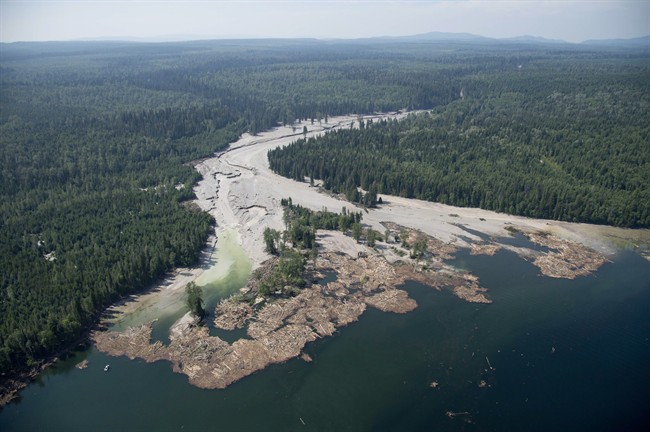WILLIAMS LAKE, B.C. – A group of First Nations from Williams Lake, B.C., whose territory includes the area devastated by the Mount Polley tailings pond breach has created a detailed mining policy that will apply to existing, proposed and future projects in its territory.

Northern Shuswap Tribal Council mining co-ordinator Jacinda Mack said Monday the policy is not meant to thwart mining in the area, but seeks to ensure the industry is sustainable, environmentally safe and has the support of First Nations.
The 54-page document was developed with the help of experts when the Xat’sull, formerly the Soda Creek First Nation, commissioned the project last year.
The plan was launched before the Mount Polley disaster last August when millions of litres of mine water and waste gushed over the landscape near Likely, B.C., and shut down operations at the Imperial Metals open pit, copper and gold mine.
“This policy isn’t about shutting down mining,” said Mack. “It’s basically saying we have four operational mines in our territory, and how are we going to deal with them in a way that makes them safer, more accountable and more engaged with us.”
She said the policy is tougher than current mining regulations in B.C. It does not override provincial laws but the group says it will serve as indigenous law for anyone doing mining business in more than five-million hectares of its traditional First Nations territory.
Under the aboriginal policy, mining companies can no longer stake a mineral claim on territory without attempting meaningful consultation with the First Nations, Mack said.
Companies will be held to a polluter pays principle to cover any operational damages and clean-up costs, she said. Environmental stewardship of the area, including potential impacts decades into the future, will be considered before the First Nations support the developments.
“It’s having to come to us with a clear understanding up front of what we want rather than kind of going through government,” said Mack. “This is saying we are a level of government in our territory and you need to speak to us as well, and our standards are higher and our level of scrutiny is beyond current mining legislation in B.C.”
Xat’sull First Nation Chief Bev Sellars said in a statement the document will serve as a rule book for companies wanting to do mining business in the Northern Shuswap territories.
“With this mining policy we can no longer be ignored or imposed upon, and the province and industry can no longer claim they do not know how to work with us — this document spells that out in clear, specific terms,” said Sellars in her statement.
B.C.’s Energy and Mines Ministry said in a statement it is reviewing the Northern Shuswap’s mining policy document.
“The province is committed to working with First Nations so they can benefit from economic activity in their traditional territories,” said ministry spokesman David Haslam in a statement.
“Over the past four years, the province and First Nations have signed more than 200 agreements, including strategic engagement agreements; reconciliation agreements; economic and community development agreements; forestry agreements and clean-energy project revenue-sharing agreements.”



Comments